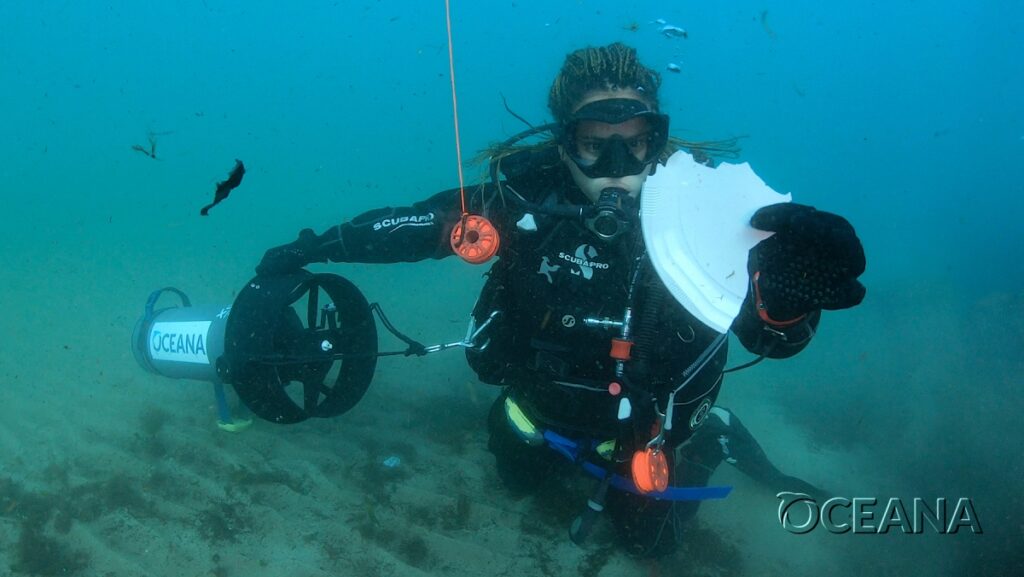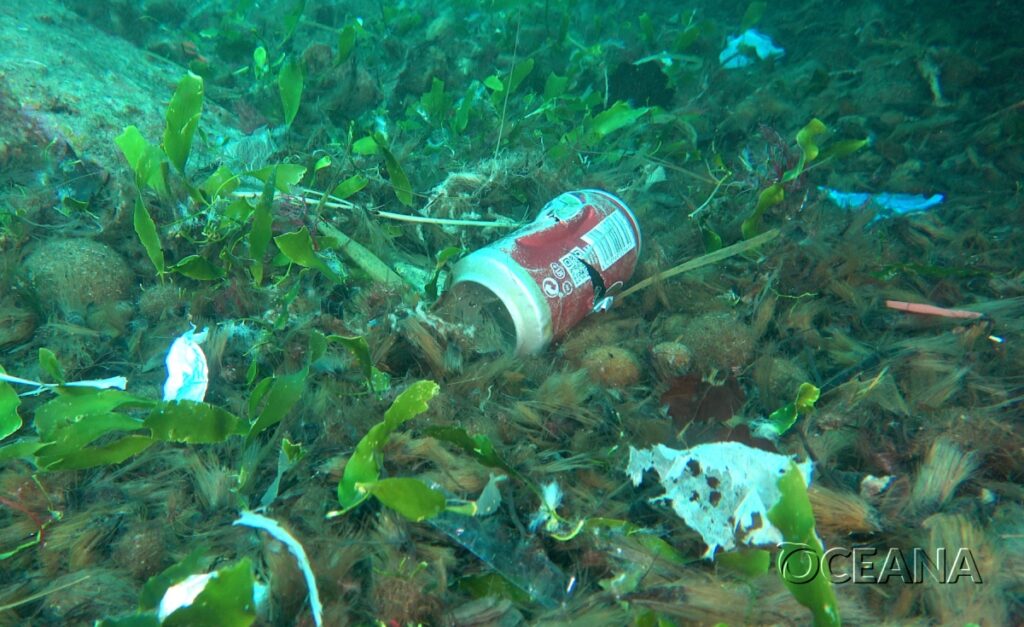The organization has been on the Levante coast to document the presence of marine litter in the Mediterranean
Despite the drop in tourism and the reduction in activity due to Covid-19, the presence of plastics in the sea is alarming
An Oceana scientific expedition has documented plastics in all marine habitats studied during a week of research off the coast of Valencia. The crew of the Ranger , the organization’s catamaran, has analyzed various types of bottoms, always finding a common denominator among them: the presence of all kinds of plastics at different depths.
Among the most documented items are single-use plastics, such as bags, food wrappers, packaging, cutlery and glasses, as well as abandoned fishing gear. However, sanitary material has also been observed, such as disposable masks and gloves, in addition to other types of garbage. These findings show that the excessive use of plastics is suffocating the oceans in an alarming way.
Oceana scientists and divers have analyzed a dozen habitats, including coralline, sandy bottoms and kelp forests. They have done it with the technical help of underwater scooters to reach further distances and a drone to reach deeper. After fifteen years of documenting marine biodiversity and finding plastics on every dive, Oceana has dedicated an expedition solely to this task. Precisely, this serves to corroborate how the presence of plastics transforms enclaves rich in flora and fauna into marine dumps a few kilometers from the coast.
The director of expeditions of Oceana in Europe, Ricardo Aguilar, explains that “ most of the plastics that reach the ocean end up in the depths of the sea. Despite being invisible to our eyes, they have an irreversible impact on marine ecosystems and seriously modify the behavior of fauna. In addition, the lack of light and low temperatures in deep areas delay the degradation process, so that plastics can remain intact for centuries ”.

Oceana diver holding a piece of plastic plate.
© OCEANA / Enrique Talledo
Marine litter (soda can and plastic pieces) on the seabed with algae.
© OCEANA / Enrique Talledo
The Mediterranean is the sea most polluted by plastic in the world due to its depth, its semi-enclosed nature and the great presence of underwater topographic elements that act as plastic traps and facilitate the accumulation of garbage on the seabed. In this sense, the organization’s experts warn that when they reach the ocean, plastics tend to follow the same pattern: larger plastics are normally found in areas closer to the coast, while they are moved by ocean currents and because of the Over time, these are fragmented and displaced to deeper areas.
The director of the Oceana Plastics campaign in Europe, Natividad Sánchez, explains that “ doing this expedition outside the tourist season and in the midst of the pandemic has shown that the problem is the abuse of disposable products in our daily lives . The vast majority of the plastics we have found are bags, disposable tableware and food product packaging. For this reason, we demand an ambitious transposition of the European directive on single-use plastics, which will come into force in July 2021 ”.
To measure the impact of plastics in the sea, the Oceana expedition has chosen the Levante Mediterráneo, specifically the waters that go from the city of Valencia to Sagunto. These areas stand out for their proximity to highly populated areas and for their proximity to traditionally tourist municipalities, indicators that tend to coincide with areas with high rates of plastic pollution.
Images of plastics found by the Ranger expedition accessible here .